
Publishers: Strategies to Grow and Engage your Audience
You’ve spent hours creating content for your next big book release, video series, or thought-provoking podcast. And now it’s time to promote it with a spot-on email campaign.
You create the perfect newsletter and hit “Send.” But it feels like the needle doesn’t move.
Your open rates are low, the clicks are rare, and the list you spent so much time building? It’s gathering dust.
An inactive and disengaged email list isn’t just frustrating. It’s also costly. And not just money-wise. An inactive email list translates into an inactive fan base. Missed engagement. Missed promotional opportunities. In the end, missed revenue.
An active, engaged audience should be waiting for your next email, love your tailor-made content, and share it because they see its value. To reach that level, you need a shift in strategy.
You need to grow your list with fresh subscribers by creating landing pages and subscription forms, while keeping your current audience hooked and eager for more with personalized recommendations and a preference center.
But how are you going to incorporate all these elements into your current email marketing strategy?
That’s what we’re about to explore.
Growing your audience
As a publisher or creator, you know that growing your audience isn’t just about casting a wide net and hoping for the best. It’s about smart, intentional strategies that deliver real value through your content.
Here’s how to do it, with no fluff—just specific, actionable steps that will help you grow your list, increase engagement, and set yourself apart.
Build a landing page that converts
Let’s assume you’re about to promote the brand-new fantasy series in your catalog or your latest photography project, and you want to give some users early access. What would you need, besides a dedicated email campaign? A standalone page for your offer. In other words, a landing page. The landing page has just one purpose: to make your marketing action—in our case, your promotion—easier to find and explore.
And because your landing page is a dedicated, distraction-free space, you should reduce friction as much as possible.
Say you’re creating a podcast landing page. Your first step should be to pick a simple, high-converting landing page template:
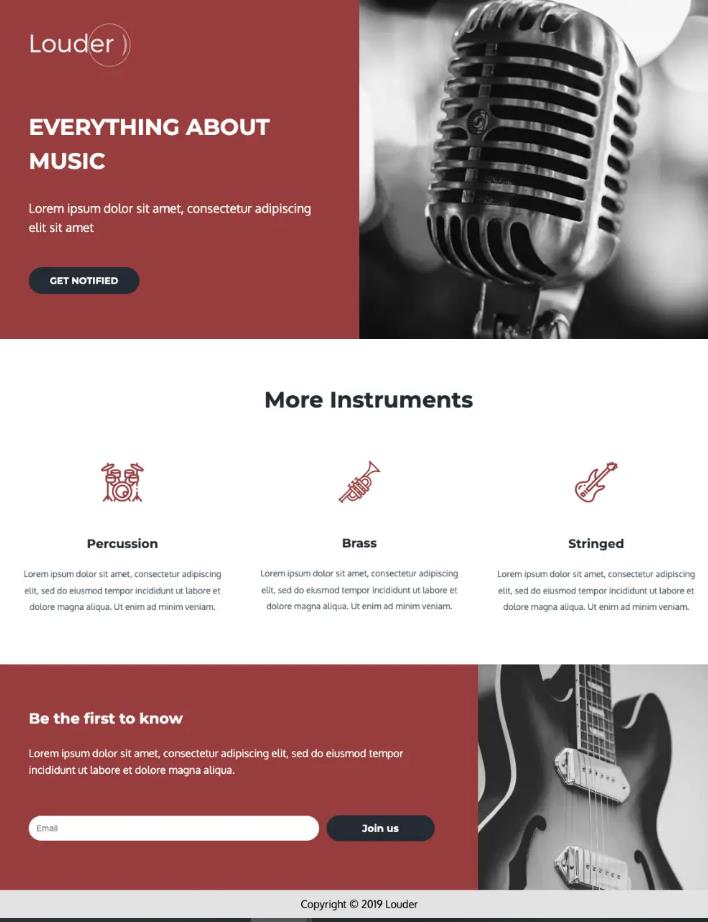
This template would work wonders for the promotion of your podcast, for three main reasons:
- The headline is clear and all necessary information is above the fold.
- There are no unnecessary buttons that could shift the user’s focus.
- There is no space for secondary actions.
When designing the page, remember to keep it clean and minimal. Try to remove unnecessary fields. At this stage, all you need is for the reader to be interested in your offer and willing to share their email address.
Audience interaction should be your priority. The more people interact with your brand, the more likely they are to subscribe to your email list and explore your content—in our example, your podcast.
Also, try to include social proof for that extra human touch. Testimonials, subscriber counts, or endorsements will show that you’re more than a faceless publisher or creator. They give your brand a relatable presence.
A landing page isn’t just a placeholder for your marketing. It’s built to convert. And for that to work, it needs to offer something your audience actually wants.
Instead of simply promoting your content with generic freebies—or even no freebies at all—try to think outside the box. Here are some ideas on what you could offer:
- A free first chapter of your upcoming book with audio narration.
- A comprehensive, beautifully designed guide tied to your niche. For example, you could offer “The complete photographer’s DIY toolkit” or “Advanced character development worksheet.”
- Early access to a new video series, complete with exclusive transcripts and behind-the-scenes content.
Of course, it’s not enough to publish a landing page. You need to drive traffic to it. This means you’re going to have to promote it.
Share it across all social platforms with eye-catching posts, stories, or Reels that emphasize the value of the freebie. (Not just “Download this guide,” but “Unlock 10 hidden strategies for [pain point]”).
Create social media and email newsletter content that is eye-catching and accessible. Instagram posts and stories, Reels, newsletter announcements that emphasize the value of your marketing action, whether it’s the freebie you’re offering or the full version of your upcoming content.
Refrain from using plain language like “Download the guide.” Since you’re a creator, you can go for something more unique like “Be the first to unlock [fantasy book title]’s secrets.”
Tip: Send your landing page newsletter to your existing email list, even if they’re already subscribers. Frame it as a “VIP-exclusive” bonus to re-engage inactive readers.
Another way to promote your high-converting landing page is to collaborate with other creators. For instance, if you’re a YouTube creator, partner with a designer to offer a co-branded resource bundle. You can create a “Complete video template and graphics kit” and cross-promote to both audiences.
Lastly, don’t make your landing page a “set it and forget it” page. Share it on multiple touchpoints like your social media bio, YouTube description, blog sidebar, and even your email footer.
Your landing page should be live and easy to find for as long as it’s relevant and serving its purpose.
Keep your subscription forms visible
A landing page is not the only entry point for a new subscriber. Opt-in forms are just as useful when it comes to attracting new leads—provided they’re not tucked away in your website’s footer.
Instead of using your opt-in forms as an afterthought, think of each of them as a mini campaign. Each one of them has its own purpose and is designed to capture different types of attention.
Start by pinpointing which subscription form you want to use to promote your content and draw more subscribers in:
- Modal pop-up: It’s the form we all know. Use it to attract more subscribers with something they already know and love.
- Inline form: This attention-grabbing form appears once the reader is already engaged. Best paired with content like blog posts or short stories.
- Floating bar: If you want to be discreet, this one is for you. This form will float discreetly at the top or bottom of your page.
- Floating box: Like the floating bar, the floating box will remain by the reader’s side, for them to subscribe when they’re ready.
- Full-page form: The most attention-grabbing. It will cover the entire page and demand action.
- Promotional pop-up: It does exactly what the name suggests. This form works beautifully with special promotions.
After pinpointing the type of form you want to use, make sure to decide where you would like to place it. A good rule of thumb would be to use it where you already have a lot of traffic. For example, if your blog gets more traffic than your home page, using a newsletter signup form on your latest blog post makes sense.
So, let’s assume that you want to promote your new eBook and that your latest blog post had a lot of visitors. You won’t need a dedicated tool to draw those visitors in and turn them into subscribers. If you’re using some of the most popular email platforms—like Moosend—to send newsletters, you can also create simple forms to attract new subscribers without switching tools. Let’s see how.
Log in your Moosend account and pick the subscription form type that matches your goals:
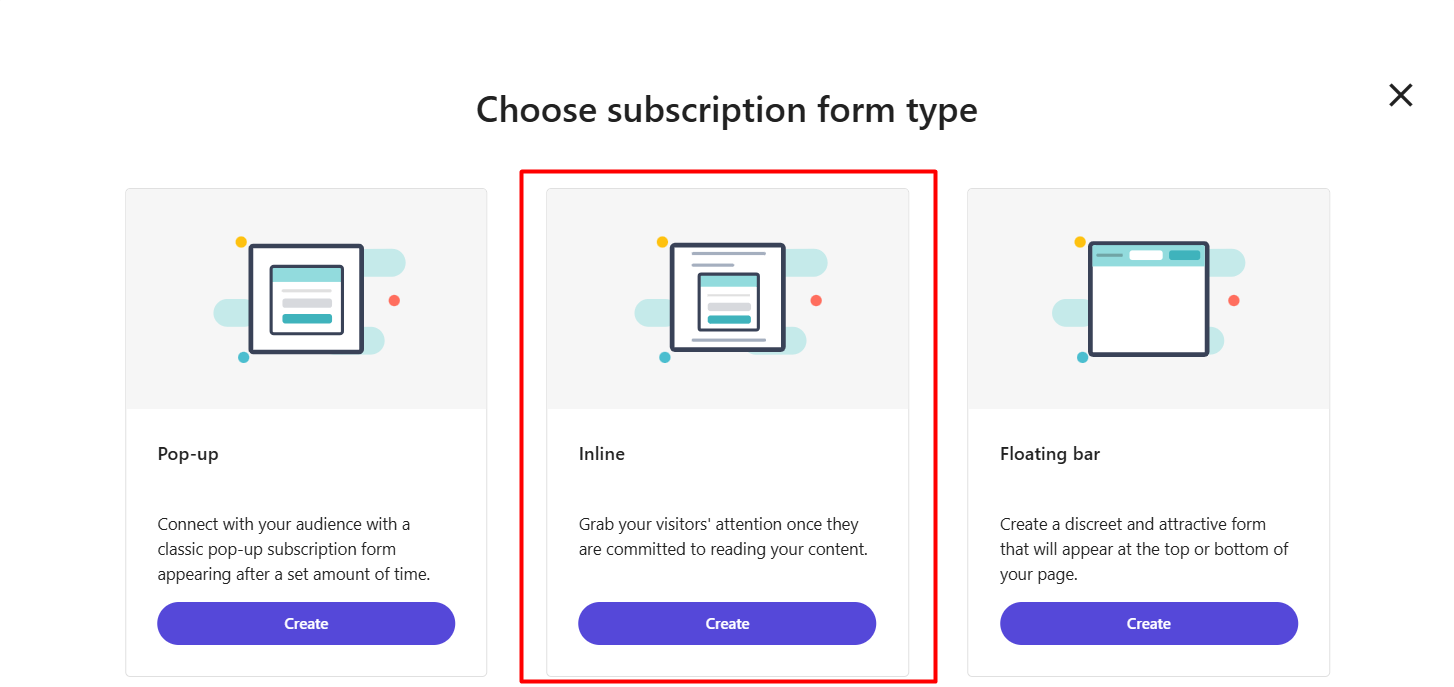
Go to the template library and choose your favorite template:

To attract audiences similar to those you already have, check out your analytics from past marketing actions and see what performed better. If exclusive content has been an all-time favorite, offer a free chapter from your upcoming book. If exit-intent popups has worked better, offer an exclusive download or a sneak peek when the visitor is about to leave your site.
Tip: Use conditional visibility for your opt-in forms. That way, you’ll get more targeted subscriptions, and you’ll hide the form from users who wouldn’t opt in or have already subscribed.
Turn visitors into leads with a simple form
Grow your list with no-code subscription forms that make a great impression.
Try MoosendTurn subscribers into ambassadors with smart segmentation
Your existing subscribers aren’t just a passive list. They are a community that can help you grow, if you set the stage. The key is to make your referral campaigns both targeted and rewarding.
Start by making every email easy to share. Add clear “Forward to a friend” buttons and social sharing links so readers can effortlessly pass your content along.
But here’s the twist: don’t blast a generic referral message to everyone. Instead, use email segmentation to focus your efforts.
Not all subscribers are equally likely to refer others. Some are superfans who consistently open your emails, click through, and engage with your content. Others might be less active. Identify these high-value subscribers by tracking behaviors:
- Open rates: Who always opens your emails?
- Click-throughs: Who clicks through to your new videos, podcasts, or blog posts?
- Past referral actions: Who’s shared your content before?
After tracking those actions, you can segment engaged subscribers and send them a targeted referral campaign. This ensures you’re not wasting effort on unengaged readers and instead focusing on the people most likely to amplify your message.
Let’s say you want to promote your new eBook to a wider audience. Create a segment of “Highly engaged readers” who opened at least 5 emails and clicked 3 times in the past month.
Send this segment an email with a clear incentive: “Share this with friends to get exclusive early access to [brand name]’s new eBooks.”
Engaged readers are more likely to trust and act on your referral request. Couple this with the fact that targeted campaigns feel personal, not like spam, and you’ll see that segmentation increases your chance of real growth rather than hoping a generic referral blast catches someone’s attention.
Tip: If you’re gathering data beyond email addresses, layer your segments for better results. For instance, create a segment of “engaged and high social influence” by combining engagement data with social media handles. This lets you target readers who are not only active but also have larger networks, maximizing referral potential.
Engaging your audience
Getting someone to sign up is one thing. Keeping them engaged and excited is a brand-new challenge—and to some, this is the real challenge.
Once someone has trusted you with your email address, they’re expecting to see content that is memorable and portrays value.
Here’s how to level up your engagement strategy and stand out in a crowded inbox.
Personalize your emails for maximum engagement
As a publisher and creator, you know that personalization isn’t just a polite greeting. It’s the secret sauce that keeps your audience engaged and growing. But how are you going to go beyond the “Hello [First Name]” to deliver content that feels cherry-picked for each reader?
It all starts with custom fields. Custom fields are entry points for specific data that sets each subscriber apart. Here’s what you can use:
- Preferred topics like writing, video content, or podcasts
- Favorite genres like fantasy, economy topics, or video creation
- The subscriber’s role in the content ecosystem: are they readers, aspiring writers, or fellow creators?
Custom fields are a functionality offered by some of the best email marketing tools, like Moosend and Constant Contact. And they’re very easy to create. For example, on Moosend, all you need to do is click on “Create custom field” in the “Email List” section.
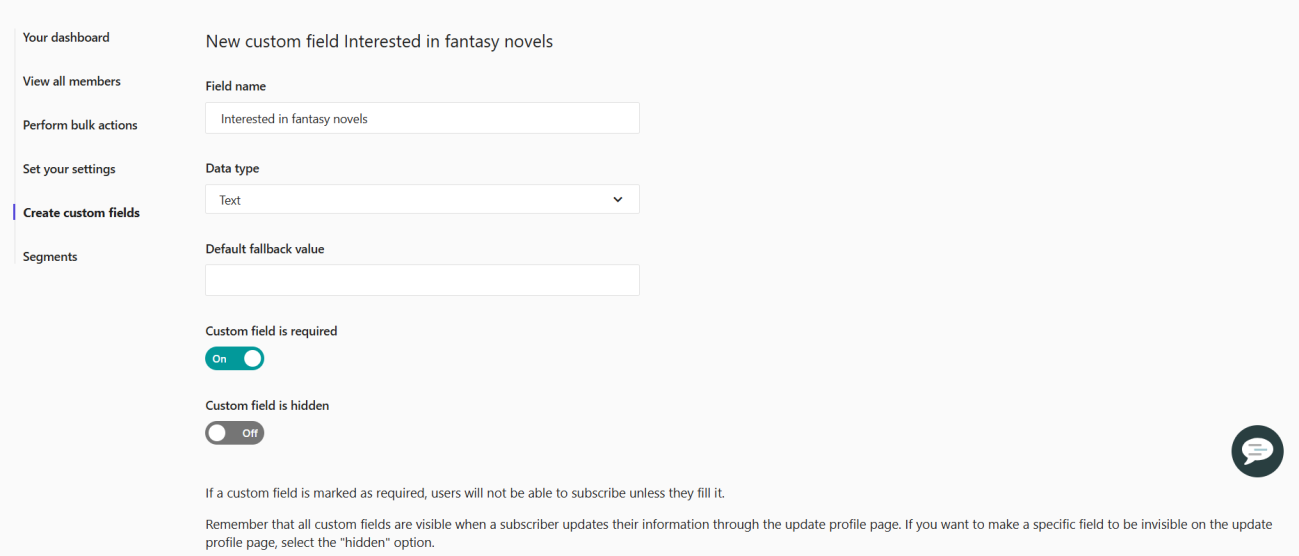
Let’s assume you’re a publisher. And that this week’s newsletter is offering resources for various genres, fantasy novels being one of them. Some subscribers may be all about that, while others might prefer history novels or biographies, making your newsletter irrelevant to them.
With custom fields, you can:
- Identify who’s most interested in which genre.
- Craft different versions of your emails based on these preferences.
- Make every message feel relevant.
If you want to take your emails to the next level of personalization, you can use conditional visibility blocks. Conditional visibility makes the experience more personal and intimate.
What you need to do is pick your favorite template and add the visibility condition of your choice:
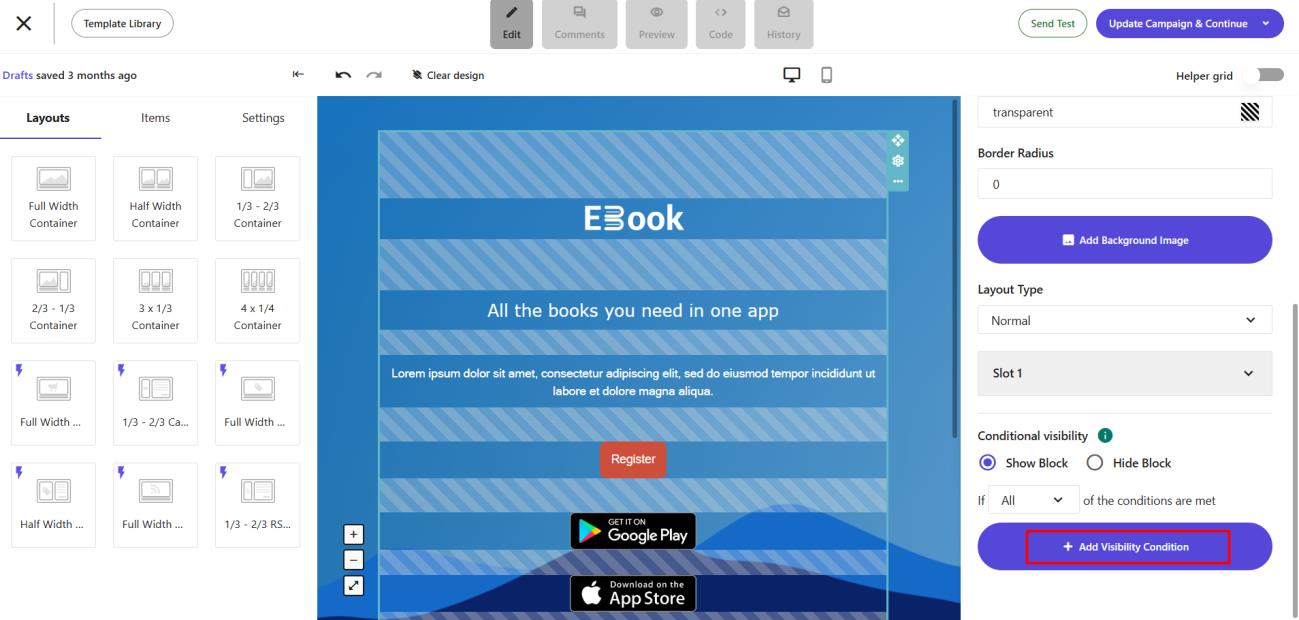
Adding a visibility condition will show Fantasy lovers the content you want them to see, while keeping the email clutter-free for video enjoyers, or blog post readers. This approach keeps your emails laser focused. Instead of everyone seeing everything, each subscriber sees only what matters to them.
Another action you can take—especially if you maintain an active blog—is to use an RSS campaign to share real-time updates. You can even combine your favorite RSS template with conditional visibility:
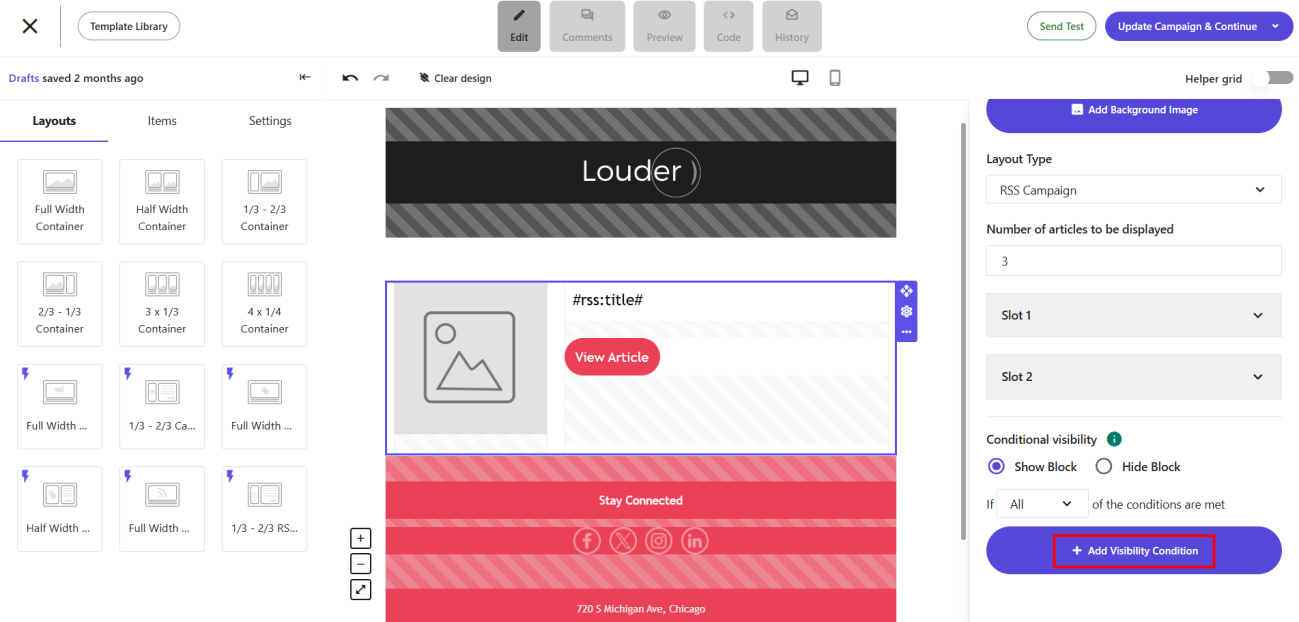
You can choose who will be able to see your latest blog posts and podcasts episodes in real time, and who will see a simple assortment of your favorite articles. This means that when your subscribers open your email, they’ll see fresh content matching their preferences, without you having to lift a finger.
This approach is about making every email feel hyper-relevant so that readers are more likely to engage with your content. It can transform your newsletters into smart content hubs that adapt to your audience’s preferences, thus boosting engagement.
Tip: Tie your personalization to real-time behavior. For example, if someone downloaded your ebook on self-publishing, tag them as “interested in self-publishing” or “aspiring author” and send them an exclusive invite to your next webinar or Q&A session on that topic.
Take their preferences into consideration
It’s rare—if even possible—for a publisher and creator to have a completely unanimous fan base. Your subscribers don’t all want the same thing. Some would prefer to receive weekly writing tips. Others are all about behind-the-scenes publishing stories. And a different segment only wants updates when you drop a new podcast episode or video.
So, instead of sending them generic emails or assuming what they’re interested in, why not just ask?
A preference center gives your audience the power to choose when they want to hear from you and what type of content they want to receive. It helps you meet readers where they are.
Setting up a content preference center for your audience is a breeze when you’re using popular email marketing tools like Moosend. Let’s see what actions you need to take to build it.
First of all, decide what choices you want to offer your audience. Do you want them to choose between content formats, newsletter frequency, or topics of interest?
In step two, you need to customize the preference field to portray the content you want your audience to choose from:
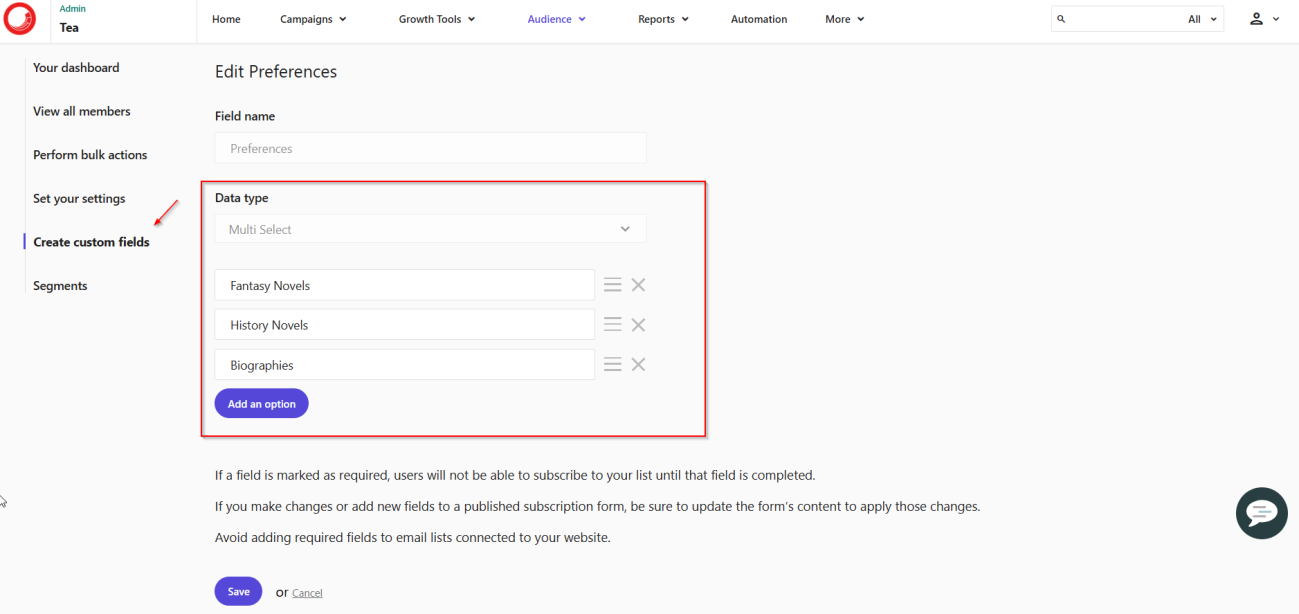
After that, it’s time to create your preference center.
In Moosend, search for “Preference Center” in the landing page template library and pick your favorite. For our example, let’s use this one:
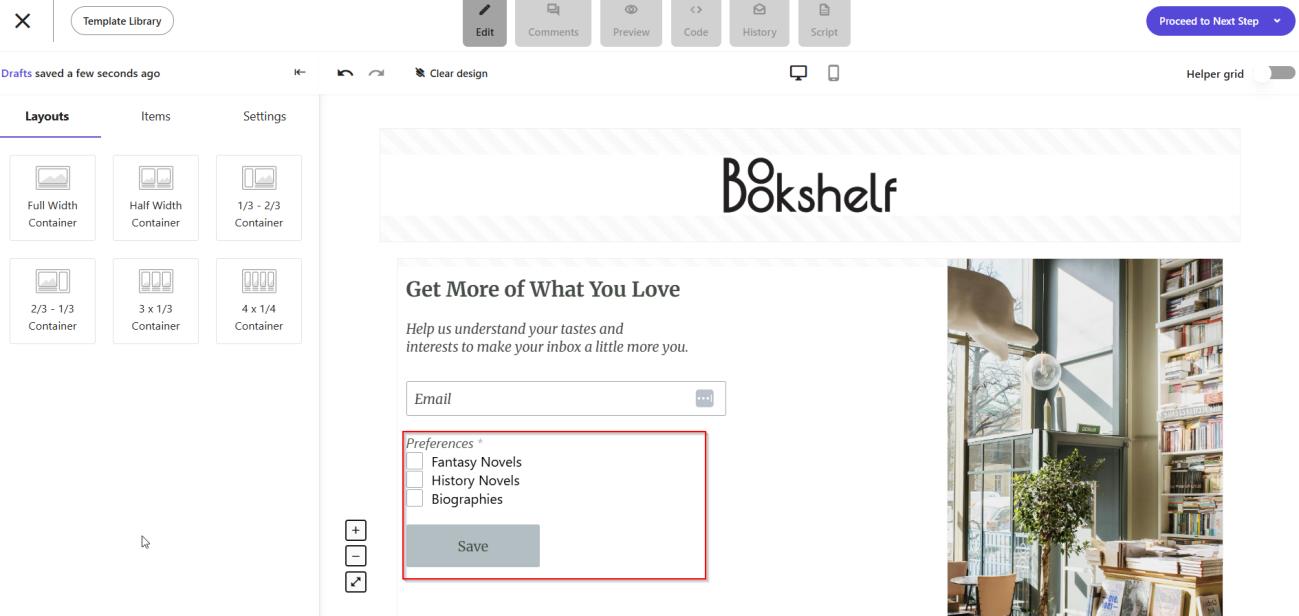
The preference center uses the custom fields you’ve previously created, saving you time and effort. Now all you need to do is click on the “Proceed to next step” button.
Your preference page is all set and ready for you to link it wherever possible:
- In your newsletters’ footer
- In a dedicated campaign encouraging subscribers to personalize their experience
- On your website
- After a user signs up or makes a purchase
For example, let’s say a new subscriber joins your list and selects “behind the scenes podcast creation videos” as their primary interest. This simple choice allows you to send them a campaign that spotlights your latest videos on the making of your upcoming podcast episode. Their preference has now become a personalized journey that keeps them engaged and more likely to remain loyal.
Creating a preference center gives your subscribers a say in what they receive. This makes them more likely to stay subscribed to and engaged with your content, as they’re the ones choosing what they want to see. This action builds trust because they feel in control, and it gives you high-quality data with which you can refine your email and content strategy down the line.
Tip: Instead of waiting for subscribers to find your preference center on their own, lead them towards updating their preferences with behavior-based campaigns. For example, if a subscriber has stopped opening your emails for a few weeks, send an automated “We miss you” campaign with a clear body copy and CTA. Go for something like “Not finding what you need? Let us know what you’d like to see more of by updating your preferences. We’ll tailor the content just for you.”
Use urgency to keep engagement going
People are wired to respond to urgency and interactivity. And your readers are no exception. If you want your audience to not just open your emails, but to engage with them right after their initial open, use interactive and time-sensitive elements like countdown timers and a “Wheel of Fortune.”
Countdown timers and time-sensitive elements create a sense of urgency. And urgency drives action. So, when you’re creating a campaign—especially to promote paid content, a new release, or a webinar—make sure to include something like this in your email template:
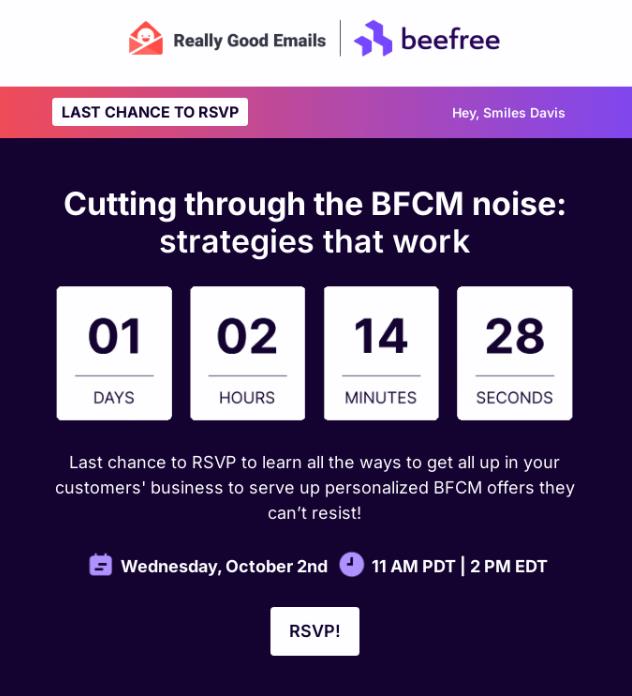
In our example, two brands that collaborate in one webinar have added a countdown timer to their email to announce the date.
You can copy this action when you’re about to announce a collaboration or new content—especially when it’s a limited-edition type of deal, or flash content drops. When the timer hits zero, you will have built the momentum, and your audience will feel the urgency to check out the new content.
Want to build more excitement and have users actively interact with your content? Include a “Wheel of fortune” element, especially on your promotional landing page. You can offer readers exclusive access to limited-edition releases and a chance to win exclusive perks like bonus content, signed copies, or a sneak peek at behind-the-scenes videos.
By making your content feel like a gamified experience rather than a one-way announcement, you’ll transform passive subscribers who simply read emails into active participants who click through and convert.
Tip: Use triggered emails to layer interactivity with urgency. For example, if a subscriber frequently clicks on your behind-the-scenes videos, send them an email with a personalized “Wheel of fortune” offering a sneak peek at your next big project. Make it extra urgent with a 24-hour countdown timer.
Growth and engagement are a two-way street
Creating a loyal, engaged and responsive audience that doesn’t just consume content but actively anticipates and shares it, takes more than just an email. It requires strategy, creativity, and a deep understanding of what makes readers tick.
By crafting landing pages with irresistible lead magnets, using well-placed opt-in forms, leveraging community referrals, and employing behavior-based segmentation, you’re building a true community around your content.
Personalized content, dynamic blocks, and time-sensitive, interactive elements, create a lively conversation with your audience, while a preference center strengthens that connection, giving them control while giving you the insights to refine your approach.
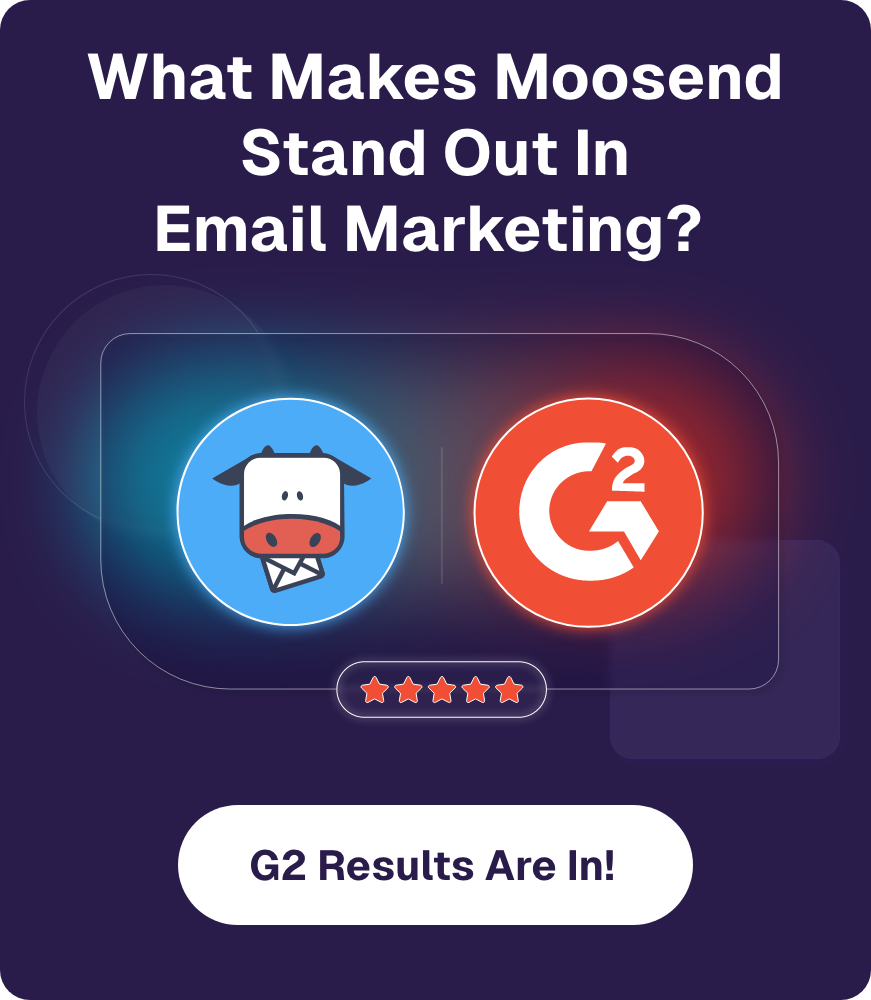
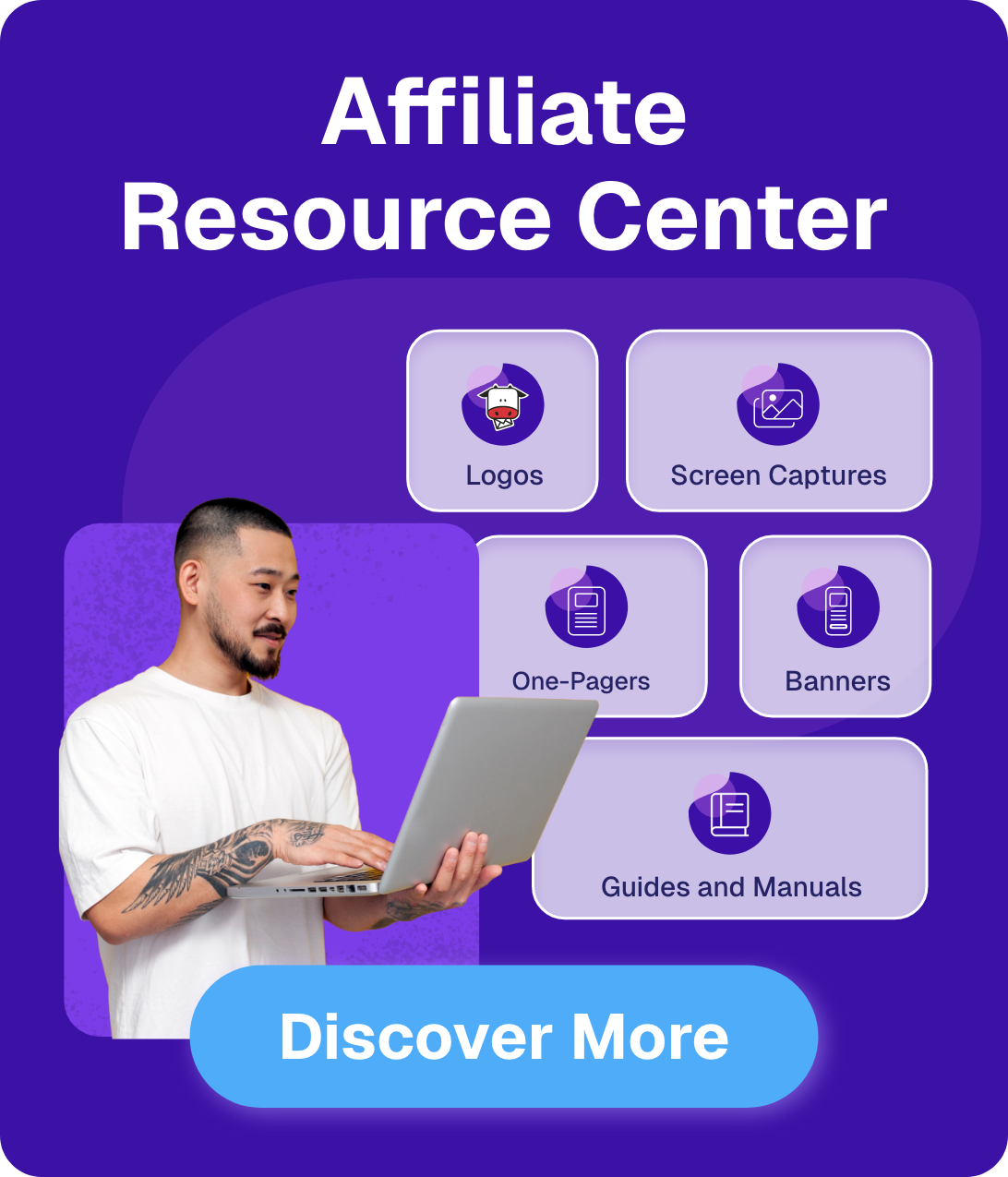

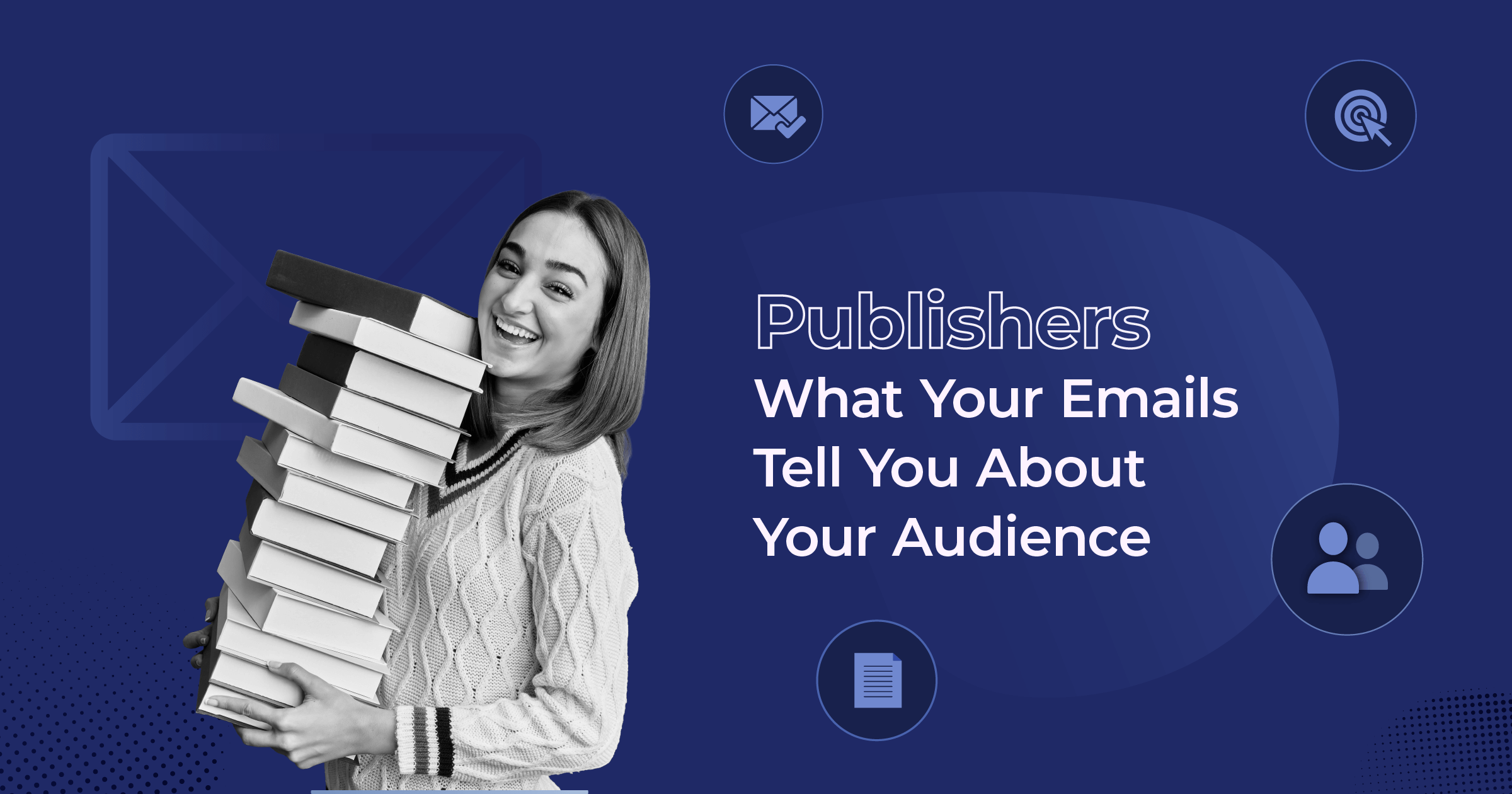

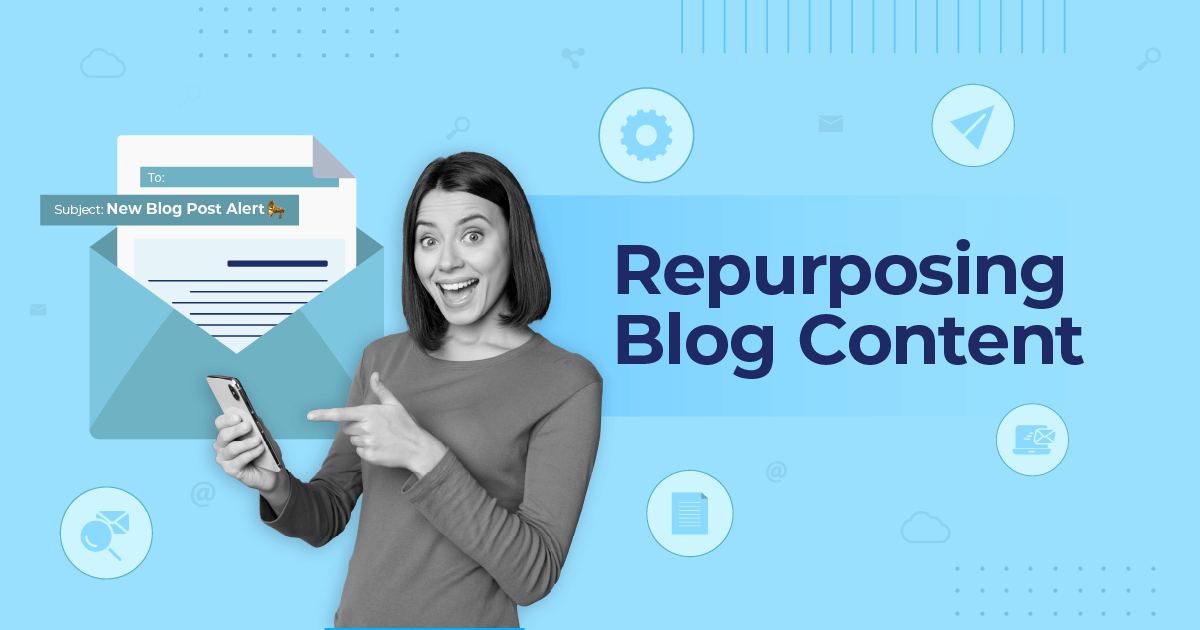
 Published by
Published by